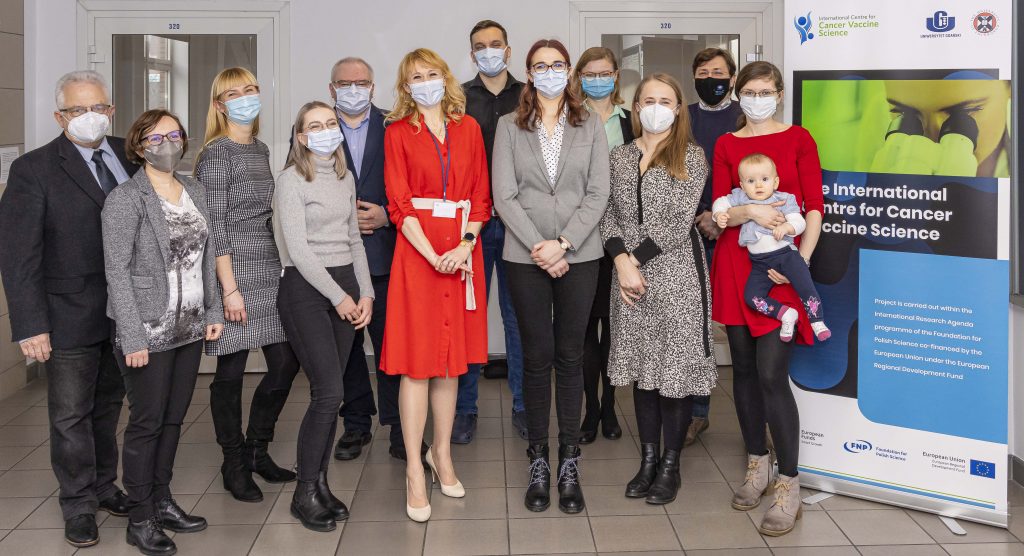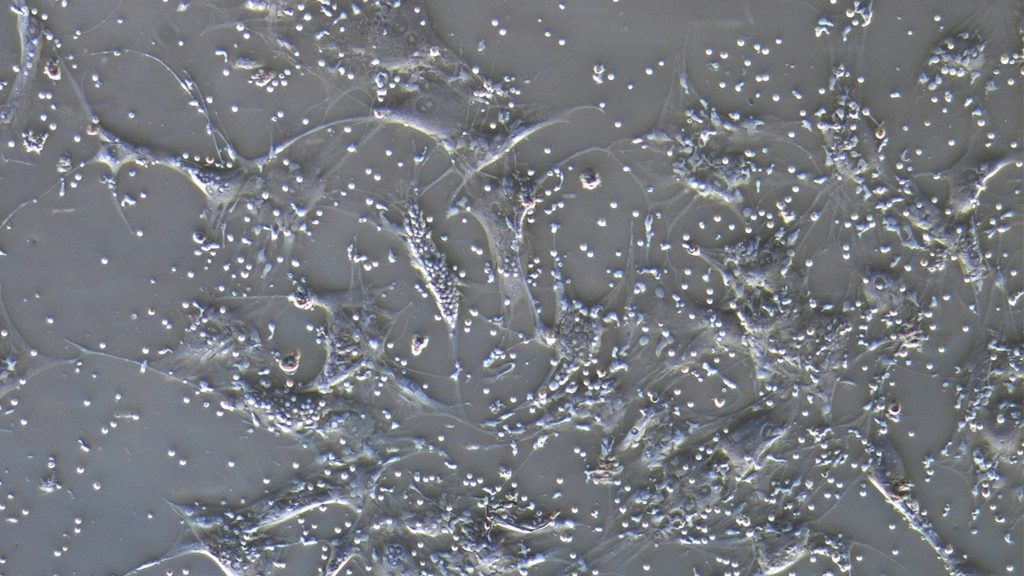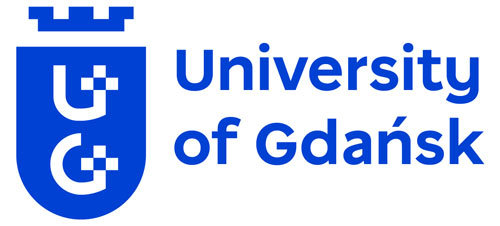
Nature Communications published the paper “Mesenchymal stem cells transfer mitochondria to allogeneic Tregs in an HLA-dependent manner improving their immunosuppressive activity”. The publication is a result of collaboration between the researchers from International Centre for Cancer Vaccine Science (ICCVS) University of Gdańsk (UG), Medical University of Gdańsk (MUG), Medical University of Łódź (MU) and PolTREG S.A. The scientists observed that mesenchymal stem cells (MSC) donate their mitochondria to regulatory T cells (Treg). The phenomenon increases significantly the activity of the latest and can be used in the therapy. In addition, observed interactions resulted in joint patent applications of UG, MUG and PolTREG S.A. submitted to the European Patent Office (EPO).
The study conceptualization and coordination was performed by prof. Natalia Marek- Trzonkowska, director of ICCVS, UG. All described experiments have been conducted in Poland and were funded from Polish grants. The paper is a part of doctoral thesis of Karolina Piekarska MSc, whose PhD viva is planned soon.
Cell based immunotherapies can provide safe and effective treatment for various disorders including autoimmunity, cancer, and excessive proinflammatory events in sepsis or viral infections (including COVID19). However, to achieve this goal there is a need for deep understanding of mechanisms of the intercellular interactions. We need to know what can happen and how the cells may react after administration to patient. Tregs are a unique cell subset in the immune system. In contrary to conventional T cells, they do not fight with bacteria and viruses but suppress activation of the other immune cells. The phenomenon is undesirable in patients with neoplasm. However, Tregs are crucial to prevent us from development of autoimmune diseases and allergies. The cells are also required for induction of immune tolerance to transplanted organs. While MSC are multipotent (they can differentiate into various cell types, for example osteoblasts, glial cells or chondrocytes) nonhematopoietic progenitor cells that are present in human body. One of their rich source is an adipose tissue. Despite of different origin Tregs and MSCs demonstrate immunoregulatory properties that have been already tested in clinical trials (including the trials conducted by the authors of the publication). In the current paper the researchers showed that direct and indirect contact of Tregs with allogeneic (derived from a different donor) MSC potentiates immunosuppressive activity of Tregs. Tregs expanded in presence of MSC are significantly more effective suppressors of conventional T cell proliferation. In addition, they show enhanced degradation of extracellular ATP and AMP, leading to accumulation of tolerogenic adenosine. The phenomenon can be used in therapy of autoimmune diseases (e.g. type 1 diabetes, multiple sclerosis or rheumatoid arthritis) and for induction of tolerance to transplanted organs. If similar interactions take place between autologous cells in tumour microenvironment, then blocking of this communication can became a part of anti-cancer treatment. Thus, the researchers plan to continue the studies in the context of cancer therapy. Nevertheless, the published data uncover much more in terms of intercellular communication. The scientists showed that MSC donate their mitochondria and fragments of plasma membrane to Tregs. If one attempted to compare the cell behaviour to the human world, he/she should imagine organ and skin patches transfer between people who meet directly and shake hands. Moreover, the scientists showed that this phenomenon depends on HLA antigens. HLA molecules are elements of the major histocompatibility complex. Each of us have the unique set of these antigens. This diversity is beneficial from the point of view of evolution and immunity. However, is can became a problem for donor- recipient matching during organ transplantation. The team indicated that the transfer of active mitochondria from MSC to Tregs is more intensive, when HLA mismatches between the cells are more numerous.

“This study shows how a single (initially quite crazy) idea can unexpectedly sprout out and develop multidimensionally”- says prof. Marek- Trzonkowska. “Initially we have been working with Karolina in tandem. These were the days and nights spent in the laboratory. We have often been wondering if our work makes sense or maybe we have already crossed the red line of common sense. I will not forget Karolina’s sight when I decided to froze something extra or collect another set of supernatants. However, when the first proofs appeared and showed that the phenomena that we have just predicted initially, really take place, I have started to ask myself what should I do to make this discovery visible. What is missing in our study? What else should be tested? Nevertheless, through a tangle of circumstances our study sailed soon on deep waters. It was a result of collaboration of scientists from 3 universities, namely Medical University of Gdańsk (MUG), University of Gdańsk (UG, ICCVS), Medical University of Łódź (UM) and PolTREG S.A. company. Working in multidisciplinary team, with people who were curious where the research will lead us and who never asked- what time is it, me manged to publish this study in Nature Communications. How a long way we walked from the laboratory work, through data analysis, figure preparation, discussion with the reviewers, additional experiments…is known only to the co-authors of this study and their families. I am grateful that MSC and Tregs took us for this extraordinary journey and showed us some scenes out of their secret life. I hope that this fascination with the cells will stay forever with me and people who work with me. Curiosity and enthusiasm are simply indispensable in scientific work.”
Those who are interested we direct to the publication:
Karolina Piekarska, Zuzanna Urban- Wójciuk, Małgorzta Kurkowiak, Iwona Pelikant- Małecka, Adriana Schumacher, Justyna Sakowska, Jan Henryk Spodnik, Łukasz Arcimowicz, Hanna Zielińska, Bogusław Tymoniuk, Alicja Renkielska, Janusz Siebert, Ewa Słomińska, Piotr Trzonkowski, Ted Hupp, and Natalia Maria Marek- Trzonkowska. Mesenchymal stem cells transfer mitochondria to allogeneic Tregs in an HLA-dependent manner improving their immunosuppressive activity. Nature Communications 2022. DOI: 10.1038/s41467-022-28338-0.


